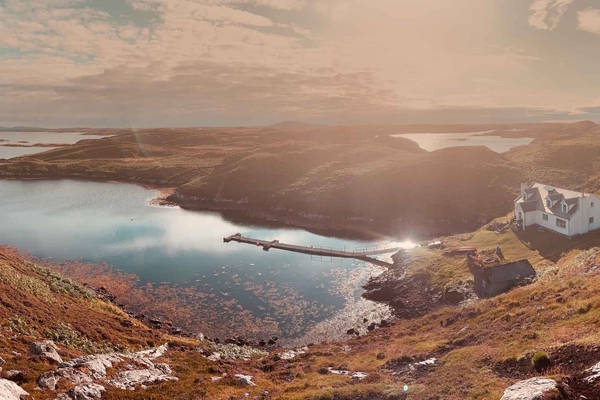Remote and autonomous technologies will power the renewable energy transition – and create better working conditions
Sponsored by FugroDaniel Jones, Director of Inspection and Maintenance, Fugro
Wind power is a key source of renewable energy. In the United Kingdom, for instance, it now contributes more than a quarter of total electricity generation, surpassing both coal and nuclear power.
But if countries are to advance their energy transition further, more wind turbines need to be built – and that requires more space on which to build them.
Offshore windfarms can contribute significantly to meeting these goals. The availability of sites, which are often located in areas with high wind speeds and relatively shallow waters, make it easier and more cost-effective to install and maintain turbines. However, increasing demand has led developers to mover further away from shore, where there is both more space and stronger, more dependable winds to generate more power and ensure economic viability.
There is one problem, however: the further out you go, the deeper the seabed and the more challenging the conditions. That makes building wind farms difficult. The move to expand wind power therefore comes with unique demands for engineers and innovators.
In the second episode in this series on Fugro, the global geo-data company that is developing sustainable ways to explore all types of natural resources, we discussed remote and autonomous solutions, including uncrewed vessels – remotely operated survey vessels that use 95 per cent less fuel than traditional ones.
Beyond the sustainability of the vessels themselves, these new innovations will help drive the broader transition to sustainable energy consumption. They can conquer distances and depths that otherwise bring risk, expense and technological challenges, and survey the subsea areas where offshore wind farms are intended to be built, delivering geo-data to ensure the seafloor is fit to hold the structures.
Once the wind farms are built, the electrical remotely operated vehicles (eROV) developed by Fugro can undertake many of the operations and maintenance tasks on the turbines and subsea cables traditionally requiring a crewed vessel. For deeper offshore and floating wind, Fugro is lining up a new 18-metre uncrewed surface vessel (USV) with greater endurance and payload capability than previous vessels, and an eROV that can dive to depths of 600 metres.
Enhancing working conditions for surveyors
Whilst sustainability is a key benefit of the technology, so too is safety, in particular with regards to removing people from risky offshore environments – those that, as time goes on, will be farther away from shore if we’re developing larger, deeper infrastructure in offshore locations.
“Traditionally, marine operations required large groups of 40 to 50 people – marine operators and remotely operated vehicles (ROV) teams, for example – to mobilise to a vessel,” says Daniel Jones, Director of Inspection and Maintenance at Fugro.
“They would often be away from home for many months, unable to contact their families and working in hazardous environments. In many respects, therefore, it’s not an appealing career choice for many people.”
Uncrewed vessels have multiple uses: to inspect infrastructure that’s already in place – for example, to scan the base of a wind turbine and assess its stability and safety – or collect data to create a detailed map of the seabed. Whatever the mission, however, they don’t need to host scientists and engineers, and their smaller size accordingly makes their presence in the sea more sustainable.
But to allay any fears, the “shift in balance”, as Jones puts it, that is brought about by these remote technologies is a better quality of working life, not reduced employment.
“We can move many of those people [from a traditional vessel-based operation] to a remote operations centre [ROC], which is a safer place for them to work,” Jones says. “We’ve developed our remote operations centres to be an environment conducive to striking the right balance. So we have large breakout areas, very comfortable modern facilities – things that aren’t available on a vessel in a closed environment.”
Moreover, he says, “We’re increasing the pool of people who are interested in marine operations because they can see it as a viable career for themselves.”
The transition has already begun with data processors remotely undertaking the geo-data analysis and reporting on projects from the ROC. As more advanced automated systems and robotics are deployed, Fugro has a programme for upskilling and reskilling people so that they can adapt to this shift. The process diversifies the workforce because people skilled in the marine environment in terms of the inspection techniques are needed, as well as those in IT and remote software development.
It’s taken time to get to the point where marine survey vessels can be operated remotely, “over the horizon”, as the expression goes. But the benefits are numerous.
Real-time data enables rapid problem solving
Take decision making. Until recently, it could take several weeks for a report to be transmitted back to land; now, data is streamed from USVs to the ROC via a live video feed, meaning clients can see the results of the inspection survey at a site hundreds of miles away in near real-time. Remote technologies therefore also enable quick decision making and problem solving.
Moreover, clients can bring in their own experts to assess the condition of an asset using the live video feed. That in turn means that if there’s a problem with a piece of equipment or infrastructure, they can make prompt, remote adjustments rather than waiting days or weeks for data to come back and then deploying other teams to do the fix.
“I think it’s absolutely an exciting time for us and for the industry as a whole,” Jones says. “We see increased numbers of uncrewed operations being required. We [at Fugro] expect to have four within Europe in the next year, [and] we’re also looking at building larger vessels that will have the capacity to do geophysical surveys.
“Again, they’ll be highly sustainable and provide a cohesive solution for our clients, and hopefully help with the energy transition that the world needs.”
For more information please visit www.fugro.com
You can check out more episodes from this series below:

Business Reporter Team
Related Articles
Most Viewed
Winston House, 3rd Floor, Units 306-309, 2-4 Dollis Park, London, N3 1HF
23-29 Hendon Lane, London, N3 1RT
020 8349 4363
© 2025, Lyonsdown Limited. Business Reporter® is a registered trademark of Lyonsdown Ltd. VAT registration number: 830519543





